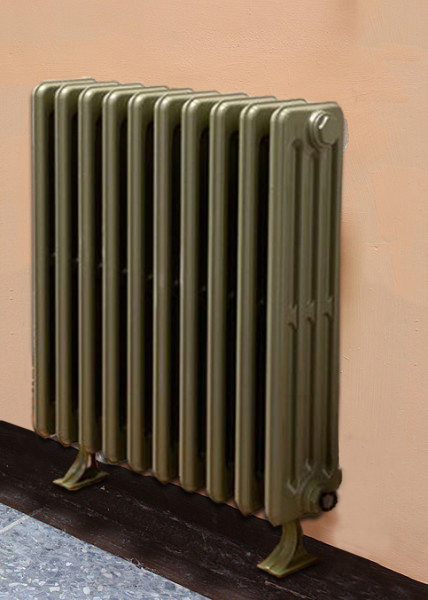How Much Do Cast Iron Radiators Weigh? The Ultimate Guide

When it comes to heating solutions, cast iron radiators stand out for their timeless charm and exceptional heat retention capabilities. However, before installing these elegant pieces in your home, it’s essential to know the weight they carry – quite literally! In this comprehensive guide, we’ll explore the factors influencing cast iron radiator weight, how to estimate it, and why understanding this crucial aspect is vital for your home heating decisions. So, let’s dive in and demystify the world of cast iron radiator weights!
1. Understanding Cast Iron Radiators: A Brief Overview To appreciate the significance of radiator weight, let’s first understand what cast iron radiators are and why they have remained a popular choice throughout the years. Cast iron radiators are heating devices made from solid cast iron, known for their durability, timeless designs, and high heat output. They add a touch of elegance to any space, be it a classic Victorian-inspired interior or a more contemporary setting.
2. Why Does the Weight of Cast Iron Radiators Matter? The weight of cast iron radiators is a critical consideration for several reasons:
a) Installation: The weight of the radiator affects the installation process. Knowing the weight in advance helps you prepare for any necessary structural modifications or reinforcements. This ensures a smooth and safe installation without unexpected surprises.
b) Floor Load Capacity: Homes have a designated floor load capacity that they can safely bear. Exceeding this limit can cause structural issues, affecting the overall integrity of the building. Knowing the radiator weight helps you ensure it aligns with your floor’s load-bearing capacity.
c) Mobility and Transportation: If you plan on moving or rearranging your radiators in the future, understanding their weight is crucial for logistical purposes. It helps you gauge whether you can manage the relocation or if you’ll require additional assistance.
3. Factors Influencing Cast Iron Radiator Weight The weight of cast iron radiators varies based on several factors. Here are the key aspects that influence their overall weight:
a) Size and Dimensions: Larger radiators naturally weigh more than smaller ones. The size and dimensions of a radiator directly impact the amount of cast iron used in its construction, hence affecting its weight.
Example: A petite 4-column cast iron radiator may weigh around 25-30 kg, while a grand 20-column radiator could weigh over 150 kg.
b) Column Configuration: Cast iron radiators come in various column configurations, indicating the number of sections they consist of. The more columns, the heavier the radiator.
Example: A single-column cast iron radiator may weigh around 10-15 kg, while a triple-column radiator could weigh 35-45 kg.
c) Design and Ornamentation: Elaborate designs and ornate details add to the aesthetic appeal of cast iron radiators but also contribute to their weight. Intricate patterns and embossed features require additional material, increasing the overall mass.
Example: A plain, sleek cast iron radiator may weigh around 20-25 kg, while an intricately designed radiator could weigh 40-50 kg.
d) Wall-mounted vs. Floor-mounted: Wall-mounted radiators are generally lighter than floor-mounted ones. Wall-mounted radiators utilize the wall for support, while floor-mounted radiators require a sturdy base or feet for stability, resulting in increased weight.
Example: A wall-mounted cast iron radiator may weigh 15-20 kg, while a floor-mounted version could weigh 25-35 kg.
4. Estimating Cast Iron Radiator Weight While specific weights vary between radiator models and manufacturers, you can estimate the weight using the following guidelines:
a) Manufacturers’ Information: Most reputable radiator manufacturers provide product specifications, including weight, on their websites or product brochures. Always check these details to get accurate weight information for the specific radiator model you’re interested in.
b) Weight Per Column: As a rule of thumb, you can estimate the weight per column of a cast iron radiator. For instance, a single column might weigh around 5-7 kg, while a double column could weigh 12-15 kg.
c) Number of Sections: If you know the number of sections in a radiator, you can roughly calculate its weight by multiplying the weight per section. Keep in mind that this is an approximation and may not be precise for all radiator types.
5. Conclusion Choosing the perfect cast iron radiator for your home involves considering various factors, and understanding its weight is a crucial aspect of this process. By knowing the weight, you can ensure a hassle-free installation, safeguard your home’s structural integrity, and plan for any future adjustments. Remember, while cast iron radiators may be heavy, their timeless beauty and efficient heating performance make them a worthwhile addition to any home. So, take your time, do your research, and find the perfect cast iron radiator that complements your space while keeping you warm and cozy for years to come. Happy radiator hunting!
